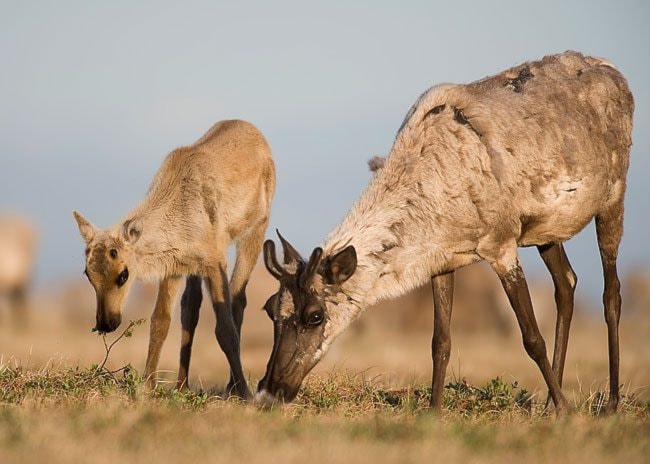In 1987, when then-president Ronald Reagan asked Congress to open up the Arctic National Wildlife Refuge to oil and gas companies, northern First Nations gathered in Arctic Village, Alaska.
Eight aboriginal citizens were chosen by their own communities to speak up about protecting the calving grounds for caribou and many other Arctic wildlife species.
Last week in Old Crow, more than half of those original spokespeople assembled the region’s youth in hope of passing the torch.
“Given the pressures of development all around the range of the Porcupine caribou, it’s absolutely something that we have to continue,” said Norma Kassi, chief of the Vuntut Gwitchin First Nation.
Kassi was one of the original eight spokespeople chosen more than two decades ago.
“They very clearly stated that, ‘You guys are in this for life,’” she said Thursday.
As part of their assignment, the elders told the eight representatives to keep the youth educated in the discussion, she added.
Taking advantage of the summer schedules, before most students have to return to school, about 30 Alaska, Yukon and Northwest Territories citizens ranging from 13 to 30 years old gathered in Old Crow on August 11 and 12.
“We need them in many areas,” said Kassi of the youth. “And we’ll encourage them to get involved and train them to be speakers, so that we can have fresh people and fresh voices. We get tired after 22 years of doing it. We have to pass on the torch all the time and make sure they are well aware of all the issues. They’re learning a lot.”
Throughout the two days, delegates explored the current political climate in the United States and received political strategy and media training. Some will eventually undergo training in Washington in how to address Congress, added Kassi.
There were also teachings from the elders about the importance of the caribou and how it has been, and will always be, essential for their communities, culture and people, said Kassi.
On Monday, the Alaska region of the US Fish and Wildlife Service published its draft plan for the refuge. It proposes six alternatives to the next 15 years of management over the area.
Almost half of the entire refuge was designated wilderness in 1980; what’s left is what the plan addresses, said Bruce Woods from the service’s office in Anchorage.
Most controversial is the coastal plains area, which is a significant spot for maternal land dens for endangered polar bears, he said.
But no plan that Woods’ team writes up can guarantee there will be no oil-and-gas development in the area, he said - that would take work from Congress.
This plan is only the first of six eventual steps that would see it through to Washington, the secretary of the Interior and, eventually, the president.
“All we can do is visualize how best to manage the refuge for American stakeholders for the approximately 15 years to come,” he said. “We’re doing what we can.”
But even with all the research and surveys the Alaska office conducts in the area, and even if it can convince Congress to assign a wilderness designation, the initiative is nothing more than a potential, political disincentive, he said.
“(Wilderness designation) may provide an additional level of protection, but that level of protection could be stripped as easily as Congress could open the area for oil and gas development at this stage,” said Woods.
The northern aboriginal delegation wants to lobby President Barack Obama himself, said Kassi.
While he has stated his support to protect the area in the past, Obama has started “caving” to offshore drilling in the region, noted Kassi.
The youth gathering was strategically set to have new forces prepared for possible calls to tour the US for next year’s presidential election, she said.
After nearly a decade with no clear counts, it was finally clarified the Porcupine caribou, which calve in the refuge, have grown in number to about 165,000.
“We’re always optimistic,” said Kassi. “We’ve held off development for 22 years and I think we’ve done an incredible job in terms of bringing education all across the country.
“The Vuntut Gwich’in have always been real leaders in doing that. Every little success is huge for us.
“We’re doing well, we’ve just got to keep continuing to maintain a really positive attitude and stay positive and stay on track.
“This is one place in the Arctic that is still a sacred place where life begins.”
The Alaskan conservation plan is open for public discussion from now until November 15.
Contact Roxanne Stasyszyn at
roxannes@yukon-news.com
